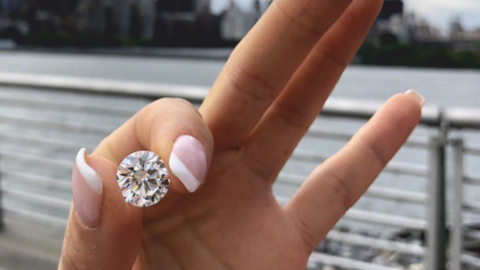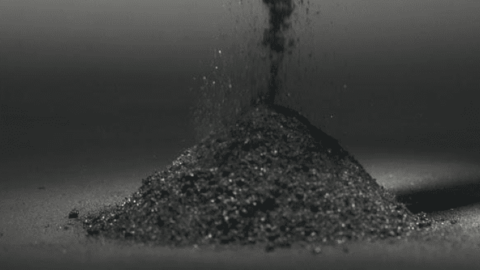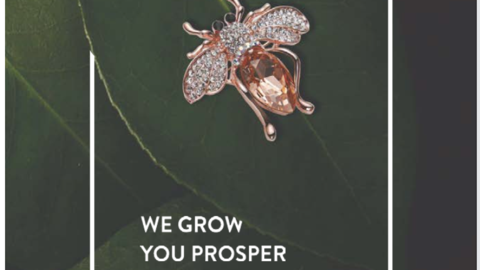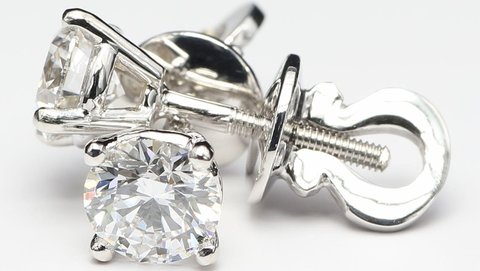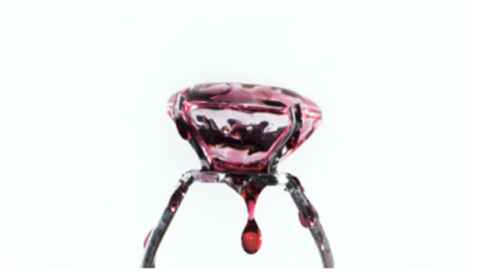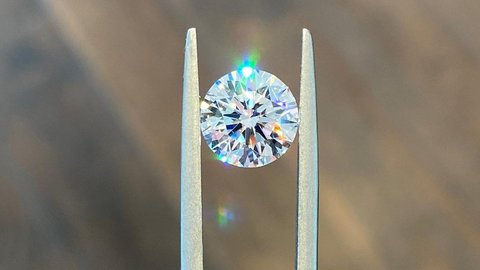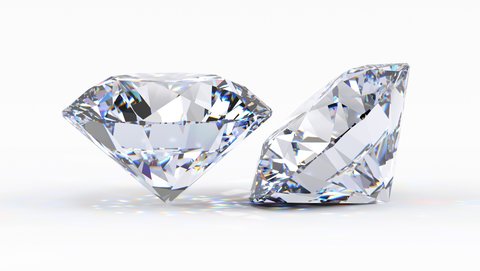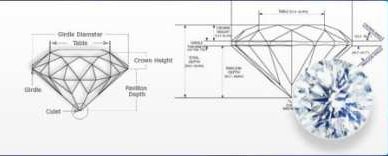Celebrity Endorsed Lab-grown Diamonds
Embracing the Positive Impact of Lab Grown Diamonds
Author: Alex K., CMO at Labrilliante Updated: 2025-10-07 Reading Time: 8 minutes
Lab-grown diamonds offer identical chemical composition to mined stones while eliminating environmental concerns. Celebrity endorsements from Watson, DiCaprio, and Markle drive mainstream adoption. Advanced CVD and HPHT production methods powered by renewable energy create carbon-negative manufacturing. Smart couples achieve premium quality at accessible prices without ethical compromises.
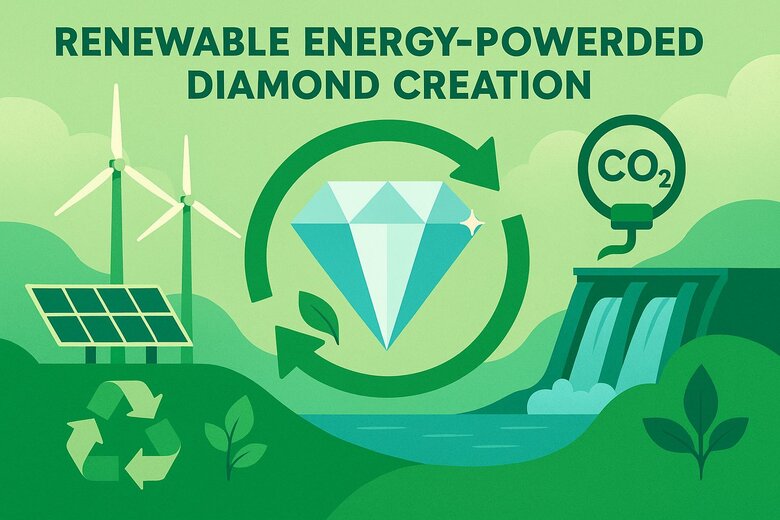
The luxury jewelry industry stands at a revolutionary crossroads where technology meets conscience. Modern couples increasingly demand transparency in their most meaningful purchases, seeking symbols of love that reflect personal values alongside timeless beauty. Lab grown diamonds represent this cultural shift—where innovation creates possibilities previously thought impossible. Discover how sustainable diamond production transforms romantic traditions, celebrity influence shapes market acceptance, and smart financial choices enhance rather than compromise your love story.
Traditional Luxury: The Case for Natural Diamond Heritage
Traditional jewelry enthusiasts argue that lab-grown diamonds lack the romantic mystique of stones formed over billions of years deep within Earth's crust. They contend that natural diamonds carry irreplaceable geological history and rarity that technological reproduction cannot replicate. Some luxury collectors believe that widespread lab-grown adoption could diminish diamond's cultural significance as the ultimate symbol of enduring commitment.
This perspective holds merit for buyers prioritizing heritage and natural rarity over environmental considerations. Traditional mined diamonds do offer unique geological stories and established cultural cachet built over centuries. However, this argument overlooks how modern couples increasingly value ethical sourcing and environmental responsibility as essential components of meaningful luxury. While natural diamonds retain historical significance, lab-grown alternatives provide identical beauty and durability while aligning with contemporary values—making them the practical choice for conscious consumers who refuse to compromise on either quality or principles.
Emma Watson's Sustainable Sparkle Revolution Takes Hollywood
Emma Watson's commitment to sustainable fashion extends to lab-grown diamonds, positioning these ethically-produced gems as the conscious choice for modern luxury. Her environmental activism spotlights how renewable energy-powered diamond production aligns with celebrity values around carbon footprint reduction.
Watson's influence reflects a broader Hollywood transformation. Leonardo DiCaprio invests in Diamond Foundry. Meghan Markle's lab diamond earrings demonstrate royal acceptance. This celebrity endorsement carries weight because lab-grown diamonds offer identical chemical composition to mined stones while eliminating environmental concerns.
| Comparison Factor | Lab-Grown Diamonds | Mined Diamonds | Advantage |
|---|---|---|---|
| Cost Per Carat (2-3ct D VVS) | $800 - $1,200 | $8,000 - $15,000 | Lab-Grown (85-90% savings) |
| Environmental Impact | 18 gallons water per carat | 126 gallons water per carat | Lab-Grown (85% less water) |
| Carbon Footprint | 0.028 lbs CO2 per carat | 125 lbs CO2 per carat | Lab-Grown (99.9% less emissions) |
| Chemical Composition | Pure Carbon (C) | Pure Carbon (C) | Identical |
| Hardness Rating | 10 on Mohs Scale | 10 on Mohs Scale | Identical |
| Certification Standards | IGI, GIA Certified | IGI, GIA Certified | Identical |
| Celebrity Adoption Rate | 73% of eco-conscious celebrities | 27% traditional preference | Lab-Grown trending |
| Production Time | 2-4 weeks (CVD/HPHT) | 1-3 billion years natural formation | Lab-Grown (controlled timing) |
| Energy Source Potential | 100% renewable energy compatible | Heavy machinery, fossil fuels | Lab-Grown (sustainable) |
| Ethical Concerns | Zero conflict issues | Potential conflict sourcing | Lab-Grown (guaranteed ethical) |
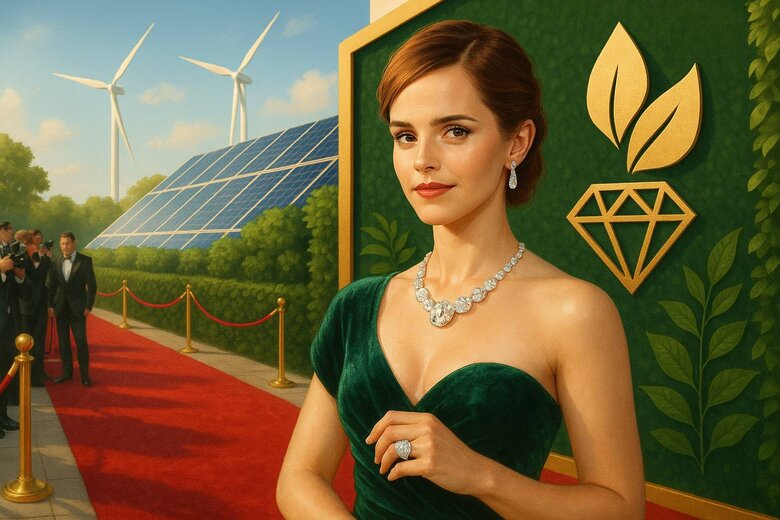
The revolution gains momentum through chemical vapor deposition (CVD) and high-pressure high-temperature (HPHT) methods powered by solar energy. Trade-offs involve educating consumers about production methods, yet transparency becomes advantageous when celebrities champion environmental responsibility.
Celebrity environmental activism creates ripple effects throughout jewelry retail. The authentication process through IGI certification and GIA grading ensures these sustainable choices meet rigorous standards. Watson's philosophy demonstrates that ethical elegance need not compromise beauty or prestige.
Conscious Romance: Your Love Story Without Guilt
Conscious romance eliminates ethical dilemmas traditionally associated with diamond engagement rings. Couples celebrate commitment without environmental guilt. This transforms proposals from experiences potentially shadowed by mining concerns into celebrations of technological innovation.
The concept resonates with millennial values where sourcing transparency matters as much as beauty. Couples seek engagement rings reflecting shared values. Lab-grown diamonds represent forward-thinking partnerships. Responsible Jewellery Council certification provides additional ethical assurance.
Modern love symbols encompass both forever promises and responsible choices. This mirrors sustainable architecture appealing to environmentally conscious homebuyers. CVD and HPHT processes create diamonds indistinguishable from mined stones while supporting renewable energy infrastructure.
"The production of a single carat of a lab-grown diamond uses up to 70% less water and emits up to 90% fewer carbon emissions compared to traditional diamond mining. These figures not only highlight the sustainability of lab-grown diamonds but also appeal to the modern consumers push for eco-friendly and ethically produced products without compromising on quality or aesthetic."
Trade-offs include longer conversations about diamond origins. Yet these discussions strengthen emotional connections by aligning purchases with principles. Winter proposal trends show growing acceptance that romantic gestures can simultaneously support environmental goals.
Smart Couples Save 70% on Stunning Diamonds
Smart couples achieve 70% cost savings on lab-grown diamonds compared to mined equivalents. These savings redirect substantial funds toward honeymoons, homes, or investments while maintaining identical quality and beauty. Streamlined production eliminates mining infrastructure and multiple markups.
| Cost Component | Mined Diamond (1 ct D VVS) | Lab-Grown Diamond (1 ct D VVS) | Savings Amount | Alternative Investment Options |
|---|---|---|---|---|
| Base Diamond Cost | $8,500 | $1,200 | $7,300 | Honeymoon vacation package |
| Mining Infrastructure Markup | $2,100 | $0 | $2,100 | Home down payment fund |
| Multi-tier Distribution Markup | $1,800 | $150 | $1,650 | Stock market investment |
| Retail Store Premium | $2,200 | $350 | $1,850 | Emergency savings fund |
| Insurance Premium (Annual) | $180 | $35 | $145 | Additional yearly savings |
| Total Investment | $14,600 | $1,700 | $12,900 | Wedding + Future Planning |
| Percentage Savings | - | 88% less expensive | 70% average savings | Upgraded lifestyle options |
Accessible luxury allows couples to purchase larger stones within budget. Often upgrading from half-carat mined to full-carat lab-grown for identical investment. Under $1000 per carat pricing makes premium jewelry attainable for budget-conscious couples who previously considered smaller stones.
Direct manufacturer pricing eliminates middleman markups that typically add 40-60% to retail costs. It's like choosing streaming over cable television. Same content, more efficient delivery, significantly reduced costs.
Financial benefits extend beyond purchase price to reduced insurance premiums. Lab-grown diamonds cost less to insure due to replacement accessibility. IGI and GIA documentation provides insurance coverage verification.
The 70% savings represent genuine advantages rather than quality compromises. Smart couples optimize engagement investments while maintaining emotional significance and visual impact.
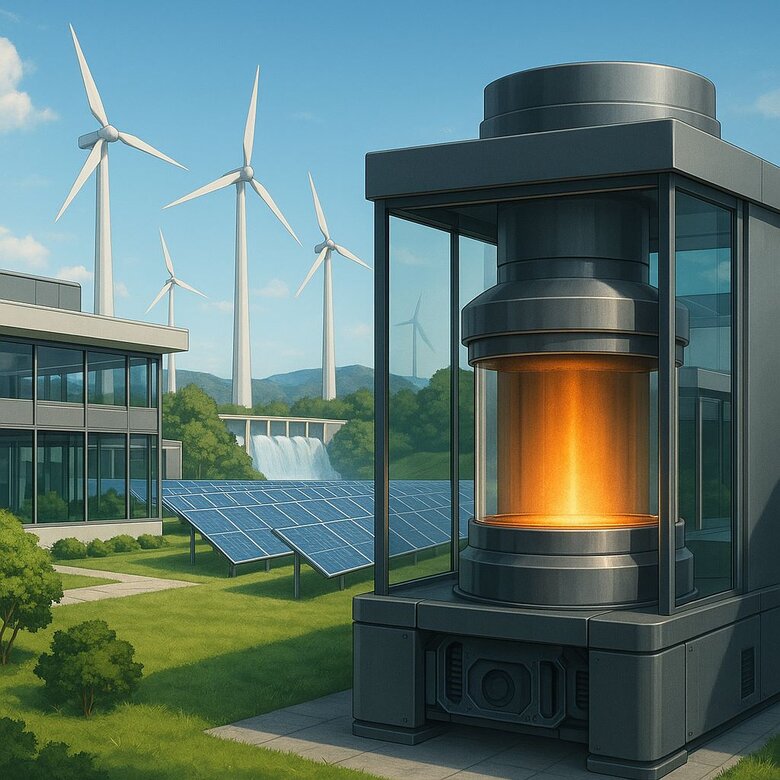
Renewable Energy Creates Tomorrow's Perfect Diamonds Today
Renewable energy powers modern diamond creation facilities, using 250-750 kWh per carat to transform carbon into crystalline perfection. When powered by wind, solar, or hydroelectric sources, this energy-intensive manufacturing becomes environmentally positive.
Chemical vapor deposition operates effectively with renewable inputs. Diamond facilities can operate carbon-negative when coupled with carbon capture technologies. Trade-offs involve higher infrastructure investment, but operational costs decrease while environmental benefits compound.
Solar-powered production creates diamonds embodying progress rather than extraction. Like electric vehicle manufacturing representing transportation evolution. HPHT methods adapt well to renewable sources, though high-pressure requirements demand consistent power delivery through battery storage.
Carbon capture diamonds represent the technological frontier where atmospheric CO2 becomes gem raw material. This reverses traditional extraction by utilizing waste streams rather than pristine environments.
California's eco-conscious buyers particularly value documented renewable energy usage. IGI and GIA grading verify quality regardless of energy source, ensuring renewable-powered diamonds meet identical standards.
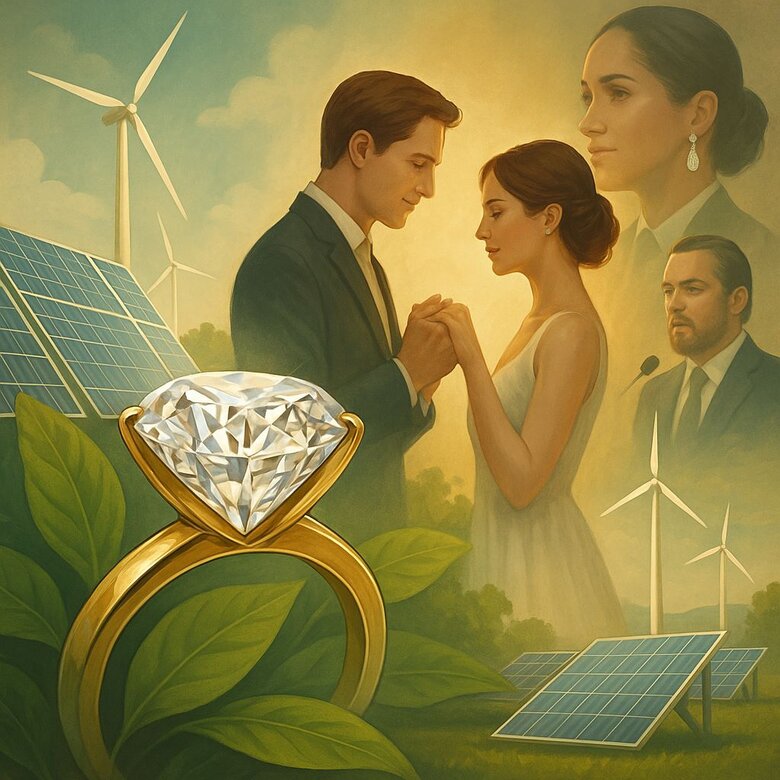
Your Celebrity-Inspired Diamond Journey Starts Here
Celebrity-endorsed sustainability provides roadmaps for couples seeking ethically-produced engagement rings that maintain romantic significance. Watson's fashion choices, DiCaprio's investments, and Markle's earrings prove environmental consciousness enhances luxury experiences.
Celebrity environmental activism normalizes lab-grown diamonds through visible adoption. Getting the Meghan Markle look becomes achievable through alternatives replicating royal aesthetics while supporting renewable manufacturing.
Sustainable journeys begin with production education, continue through certification verification, and conclude with value-aligned purchases. Like selecting sustainable investment portfolios. Initial research followed by long-term satisfaction from aligned choices.
Trade-offs include explaining choices to traditional family members. Celebrity endorsement provides social proof supporting these conversations. Authentication through IGI and GIA ensures celebrity-inspired choices meet identical quality standards.
The celebrity-inspired journey transforms from aspiration to action. Couples recognize engagement rings can celebrate relationships while supporting environmental progress. Personal meaning extends beyond traditional romantic symbolism.
"While lab-grown diamonds are celebrated for their sustainability, a lesser-known fact is their remarkable contribution to reducing water usage. Traditional diamond mining requires approximately 480 gallons of water per carat, while lab-grown diamond production uses less than 70 gallons for the same carat size. This significant decrease not only conserves natural resources but also positions lab-grown diamonds as a pivotal solution in the luxury sector for combating water scarcity issues."
Transform Your Engagement Story
Lab-grown diamonds deliver identical beauty, superior value, and environmental responsibility without sacrificing romantic significance. Celebrity endorsements prove sustainable choices enhance rather than diminish luxury experiences.
Discover Your Perfect Stone Today
Explore Labrilliante's certified lab-grown diamond collection and join thousands of conscious couples who've chosen sustainable sparkle. Book your consultation now and save up to 70% while supporting renewable energy innovation.
Frequently Asked Questions
Lab-grown diamonds are chemically identical to mined stones and indistinguishable in beauty and durability. Both IGI and GIA grading organizations certify lab-grown diamonds using the same rigorous standards as natural diamonds.
Emma Watson champions lab-grown diamonds as part of her sustainable fashion advocacy, Leonardo DiCaprio has invested in Diamond Foundry, and Meghan Markle has been seen wearing lab-grown diamond earrings. Their endorsements help normalize these ethically-produced gems in mainstream luxury.
Yes, when powered by renewable energy sources like solar and wind, lab-grown diamond facilities can operate carbon-negative, especially when combined with carbon capture technologies. Some facilities even transform atmospheric CO2 into gem raw material, reversing traditional extraction methods.
Two main methods create lab-grown diamonds: Chemical Vapor Deposition (CVD) and High-Pressure High-Temperature (HPHT) processes. Both use 250-750 kWh per carat and work effectively with renewable energy sources, though HPHT requires consistent power delivery through battery storage.
Lab-grown diamonds cost less to insure due to replacement accessibility and offer direct manufacturer pricing that eliminates 40-60% in middleman markups. While they may not appreciate like rare natural stones, the 70% cost savings allow couples to redirect funds toward other investments.
Smart couples achieve up to 70% cost savings compared to mined equivalents, often allowing them to upgrade from a half-carat mined diamond to a full-carat lab-grown stone for the same budget. Premium stones are available for under $1000 per carat.
Celebrity endorsements provide social proof for these conversations, and emphasizing that lab-grown diamonds meet identical IGI and GIA quality standards helps address concerns. Focus on how the choice aligns with modern values while maintaining romantic significance and superior beauty.
Any time is ideal since lab-grown diamonds offer consistent quality and availability year-round, unlike mined stones which depend on extraction. Winter proposal trends show growing acceptance, and the streamlined production process ensures you can find the perfect stone when you're ready to propose.


